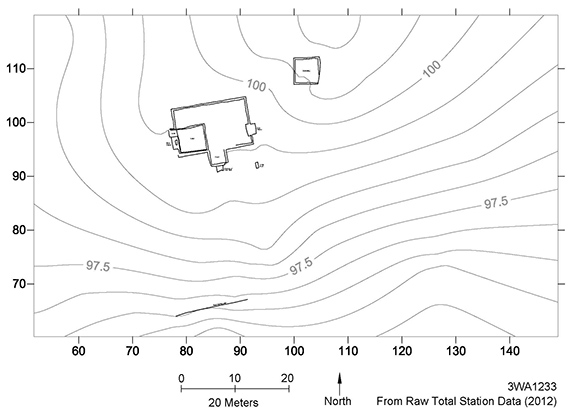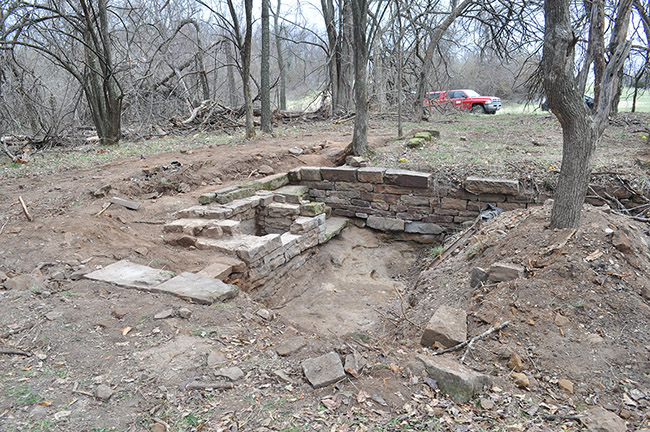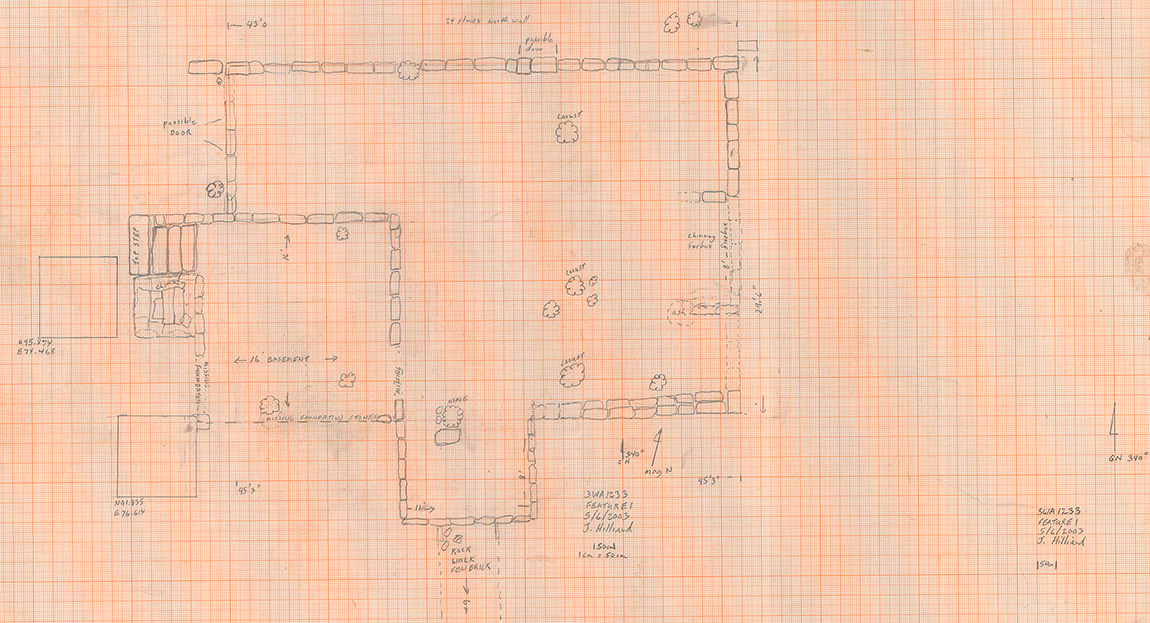
Teka McGlothlin, Arkansas Archeological Survey
Feature of the Month - May 2022

Cane Hill, Arkansas is considered a historically significant area due to being one of the earliest Anglo-American settlements in Washington County, with records showing settlement beginning as early as the mid 1820’s while still a part of “Cherokee Land.” The town housed what was to become Cane Hill Collegiate Institute – one of the first colleges in Arkansas and the farthest west of the Mississippi established at the time. Historical records also account for a civil war skirmish taking place in the town on the morning of 28 November 1862 between General Blunt of the Union forces and General Marmaduke of the Confederate forces. Within days of this encounter many of the men of these two troops would meet again in the engagement at Prairie Grove.
In 2002, the Survey was contacted by a private landowner concerning a possible cemetery on their property. During this investigation it came to light there was a forgotten homestead on the property as well. While inspecting the area, it was recognized that this was a substantial size homestead built with great care and planning. Oral histories of the area told of a school being on the property; it was with this in mind that the Survey, along with volunteers, performed initial excavations in 2003, focusing primarily on the homestead foundation and other associated buildings such as a possible detached kitchen. During this excavation there was also a preliminary investigation of the attached cellar of the house which was found to be full of debris from the house being burned and collapsed. At this time, it was established the cellar was a 16ft x 16ft space dug to the level of bedrock and containing stone walls, steps, as well as a fireplace, located within the space. This space came to be identified as Feature 11.



This site was revisited in 2012 with the hopes of further establishing the use of the property and its possible connection with Cane Hill College. Once again Feature 11 was excavated, this time more extensively revealing the walls as well as the firebox located within. Based on the size, layout and carefully constructed stone walls it was postulated this space was likely a separate living quarters from the main structure with individual access to the outside. Once the stairs, firebox, and sections of the wall were revealed again, careful measurements and mapping were obtained using total stations with more accurate GPS coordinates and the ability to digitally map on the landscape.
One theory of this homestead is it was a boarding house used by students who were attending the college. Based on the size and layout of this property which was quite large by the standards of the time - roughly 1200 square feet involving two stories, two chimneys and a basement (uncommon in properties built in the Ozarks during this time due to the rock environment,) one can imagine the need for separate living quarters with separate entrances. As a boarding house connected to the college this would also explain the oral rumors of it being a “school.”
As with all archaeology, excavation is a destructive process therefore it is important to leave as much as possible for ability to visit the site again with the hopes advancements in technology and theories will reveal further clues. It is because of the careful stewardship of this site, by the owner, that allowed us to revisit the site with a fresh outlook and 10+ years of advanced technology in order to obtain more details to enrich the existing site record.

References
Hilliard, Jerry
2002 Original unpublished field notes from initial Cane Hill, Arkansas site review. Notes on file, Arkansas Archeological Survey, Fayetteville, Arkansas.
2003 Springfield Ranch (3WA1233) Test. Field Notes, Newsletter of the Arkansas Archeological Society 315:11
McGlothlin, Teka R.
2014 The Archaeological Excavation of an Antebellum Educational Boarding House in Cane Hill, Arkansas (3WA1233). Master’s thesis, Department of Anthropology, University of Arkansas, Fayetteville.
Shea, William L.
2009 Fields of Blood, The Prairie Grove Campaign. University of North Carolina Press, North Carolina.
Feature of the Month Series
Archeological features are elements or structures that are nonportable or cannot be easily removed from a site (such as a wall or a post hole). Archeologists document archeological features extensively in the field to record what will otherwise be destroyed in the process of excavation. The records of these features are often all that is left at the end of an excavation. Excellent record keeping is necessary for these features to provide insight into the archeological record and site formation.
In this series, we present interesting and important archeological features that have helped archeologists to better or more fully understand the sites on which they were working. New features will be added monthly. Find the list of features here.
